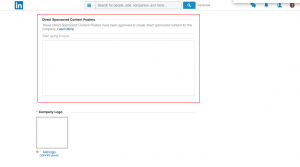Creating a paperless office is an aspirational goal of many businesses, but many organizations have yet to achieve this milestone. In reality, quite a few organizations are moving in the opposite direction and using more paper than in the past. The average office worker in the U.S. uses roughly 10,000 sheets of paper every year. Given this reliance on paper, it’s easy to see why so few companies truly manage to reap the benefits of a paperless office.
Paper is still a reality for most companies — and in many cases, the causes are beyond their control. Beyond the organizational transformation and logistical changes necessary to go paperless, there are external factors that affect how organizational changes occur. For example, even companies that embrace a paperless model work with businesses that still rely heavily on paper, making it impossible to be truly paperless.
How can you accept these challenges and still push your organization toward paperless operations? Start by understanding that going paperless doesn’t have to be as daunting as it seems. You don’t have to do away with all hard copies of essential records and completely redesign your business. Instead, going paperless should be a rallying cry for office digital transformation.
As with any other environmentally friendly office initiative, the first step of going paperless is outlining a paperless office strategy. As you do this, consider the following ways you might be able to create change:
- Reduced use of office equipment. You don’t have to remove copiers and printers, but they probably don’t need to be used as often as they are.
- Environmentally friendly initiatives. Businesses inevitably impact the environment. Find ways to educate your team members about responsible paper use and recycling habits to make a difference where you can.
- Employee buy-in. It’s hard to make a large-scale organizational change without the support of your employees. By fostering open communication across the board, you can avoid some of the issues that might stem from a disruption to existing workflows.
Getting on the Path to Paperless
With a strategy in place, the next step in determining how to reduce paper consumption in your office is to identify and use tools that can help you along the way. These five technologies can help:
1. Document scanners. Using electronic files is a great way to help your business reach its digital transformation goals. Switching to digital files also allows you to evaluate how you’ll use the various records you’re keeping — or whether you’ll use them at all. For example, electronic documents can help you automate workflows in human resources, accounts payable, and others. The shift to digital also makes sharing and accessing documents easier than ever.
2. Online forms. Instead of relying on paper forms to gather information, find software applications that help you build online forms. These forms are easier to share, require less effort to sort, and won’t end up cast aside in the wrong place — and misplaced as a result.
3. E-signatures. Digital signatures have gained popularity in recent years because they’re secure, efficient, and don’t require all parties to be in the same location. These are legally binding, just like physical signatures, so there’s no reason to wait days or even weeks for paper processes when e-signatures can be completed in minutes.
4. Electronic billing and receipts. Receiving bills via mail isn’t ideal. They’re easy to misplace and often create clutter around the office. Online payments are easy to make and can sometimes even be automated, saving your business time and — as a result — money. Digital receipts also cut down on paper waste, and your customers will appreciate having a record of every transaction without the need to track down physical receipts.
5. Cloud apps. One of the best ways to reduce paper usage is to encourage employees to switch to cloud apps. In meetings, for example, a note-taking app can sync to every device and be shareable with others so that multiple employees aren’t wasting paper to document the same information. Furthermore, cloud-based apps allow for the sharing of information in real time and are accessible from anywhere.
Operating a paperless office can certainly seem daunting, but it’s easier than ever if you have the right tools. Every office digital transformation requires some upfront investment, but the long-term savings in both time and money will more than make up for whatever effort it takes to make the change. Start by creating your paperless office strategy and finding the right tools to execute it — it won’t be long before you notice the benefits.
Are you interested in going paperless without making your job harder? Try a free demo of JotForm Tables, our newest product that empowers businesses to collect, organize, and manage their data in an all-in-one workspace.
Business & Finance Articles on Business 2 Community
(53)






